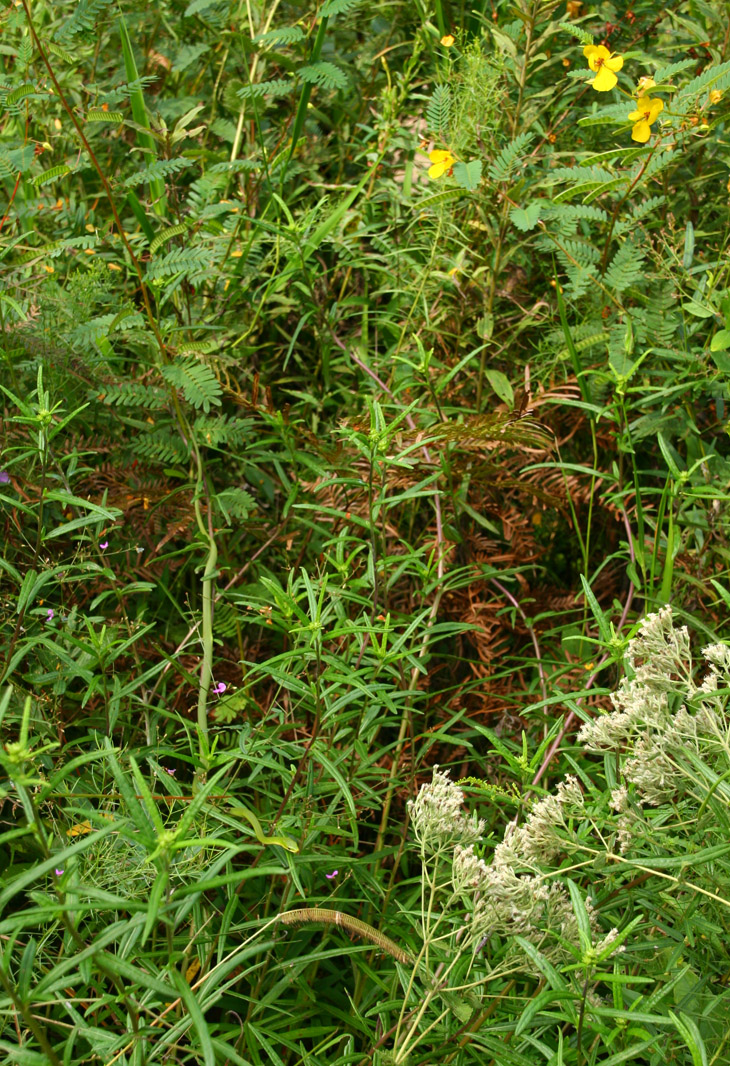
I decided to make this one the topic of my next podcast during an outing with a student, and so the images that accompany it have come from the same outing, in many cases illustrating something that I talk about in the audio. It’s not possible to spoil anything on this one, so feel free to browse ahead while my mellifluous voice (or something) purrs on in the background.
Walkabout podcast – The mindset of a nature photographer
Meanwhile, there is a reason why I opened with the image above, and if you’re having difficulty determining what it is, the audio might help.
The outing was once again to the NC Botanical Gardens which, being routinely tended, was in better shape that numerous other locations after this long heat wave – my own yard looks terrible. And we had a good measure of success because of this, almost frighteningly so. There are a few staple subjects that I often watch for during my visits, and a few others that are seasonal, so we had a short list of goals. But it’s important to have the right idea of ‘goals’ in nature photography, because too much of it depends on luck and conditions – it’s okay to feel like you accomplished something if you meet the goals, but it’s probably a bad idea to feel like you’ve failed if you don’t – it’s not like the subjects are definitely there and it only takes skill to spot them. Sometimes, there just isn’t enough to photograph.
We got an early start with a juvenile green anole (Anolis carolinensis,) that cooperatively paused on a plant just below eye-level that provided a couple of different angles to shoot from.
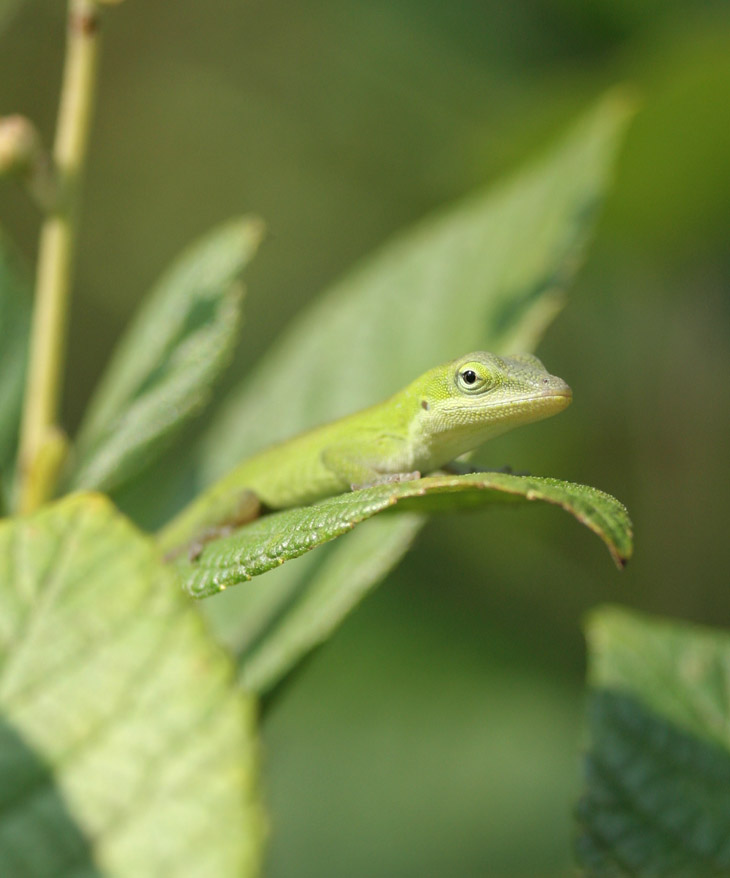
This particular image was the product of wanting to snag a specific trait, a catchlight – it’s that little reflection of sunlight from the eye, and it helps a lot to provide ‘life’ and vibrancy to any animal species caught by the camera. Most animals don’t like having the sun in their eyes, though, so the opportunities for this are often exceedingly brief, and my reptile subject here was no exception – I have a lot of images lacking it, and it took a bit of patience waiting with the camera held in place up to my eye until the lizard happened to glance in the right direction.
By the way, the anoles are one of my staples for the botanical garden, since it is a great habitat for them and the only dependable one in the immediate area – I have yet to see any in the yard, and only occasionally spot one at the nearby pond. Since this happened within the first fifteen minutes of the excursion, I considered this a good start, and it went from there.
A little later on, another visitor mentioned seeing a snake curled in the low branches of a tree not far away, and we headed off in that direction to see if we could spot it. It eluded us (possibly by holding still, but that’s still elusion, right?) so I used the opportunity to talk about what to expect. There are only a few snake species that can commonly be found in trees in this area, including black rat snakes and rough green snakes, the latter being extremely well-suited to such habitats. It had been a while since either of us had seen a rough green snake, but as I pointed out, the thick and varied bushes and weeds in the immediate area were ideal habitats for them.
It hadn’t been three minutes since I’d uttered this when one demonstrated both the habitat and the camouflage – if you’ve haven’t seen it in the opening image, feel free to check again now that you know what you’re looking for, but here it is in a more direct composition.
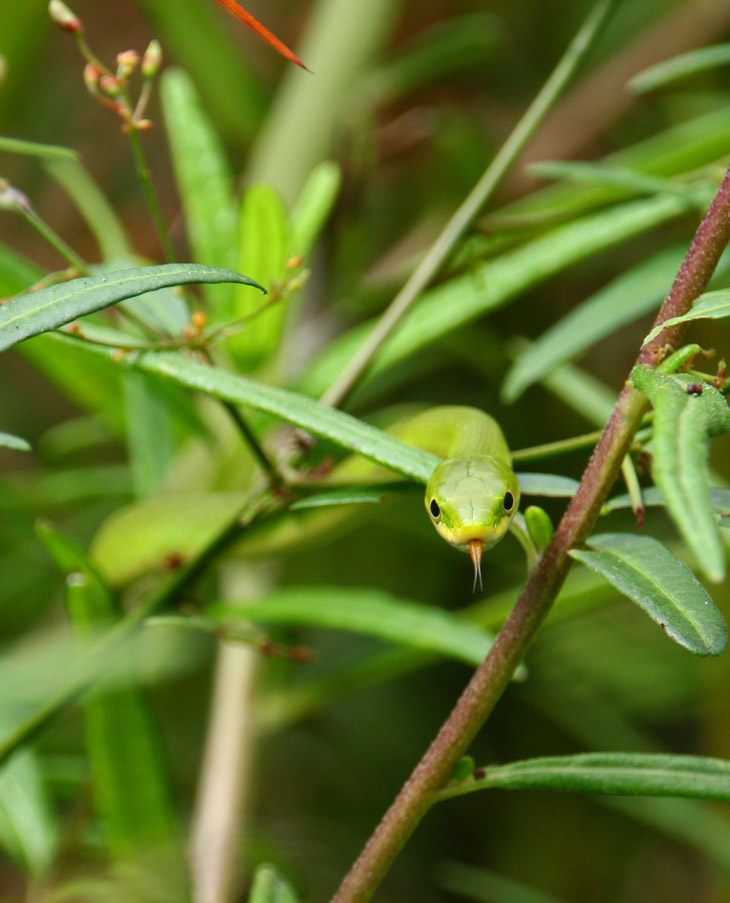
Yes, of course I waited for it to extend its tongue – listen to the bit about patience. This is a rough green snake (Opheodrys aestivus,) and they’re smaller in diameter than your little finger – also harmless, since I routinely have to point this out. This one was very clearly prowling for food, a behavior that can be recognized with experience, and it was more intent on that than on worrying about us being too close. We stayed around for a while to see what would happen because, even though we both got plenty of good portrait and habitat shots, there are always more images that can be achieved; in this case, we witnessed it striking at (and missing) a katydid that it had stalked. Had it captured this meal, we would have been ready for a whole storytelling sequence of images.
As we entered another part of the garden, I mentioned a couple of my goals for the area, knowing the conditions were right. One of those was a crab spider, which tend to lie in wait within flower blossoms and strike at the pollinators that come calling. It’s one of the many reasons why I’ve been trying to cultivate a good selection of flowers at home, with wretched luck, but the botanical garden is close enough. And so, just a few minutes after announcing these potential targets, I saw a swallowtail butterfly perched atop a flower cluster – only it wasn’t behaving in a typical manner. Leaning close, my suspicions were confirmed, though the position of the flower (and the garden proscriptions against stepping off the paths) made my shooting angles quite limited. Nonetheless, I got what I was after.
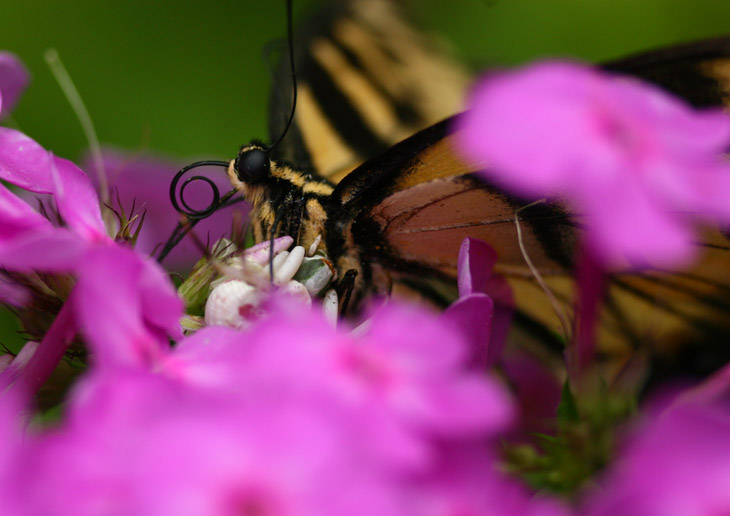
Even as direct as I could make this shot, you have to look closely to realize that the eastern tiger swallowtail butterfly (Papilio glaucus) is being held by a crab spider, most likely a white-banded crab spider (Misumenoides formosipes.) Here’s another view, actually taken an hour earlier (we did an extended circuit of the gardens,) that shows the spider a little better – I opened with the latter one because it shows the butterfly more dramatically.
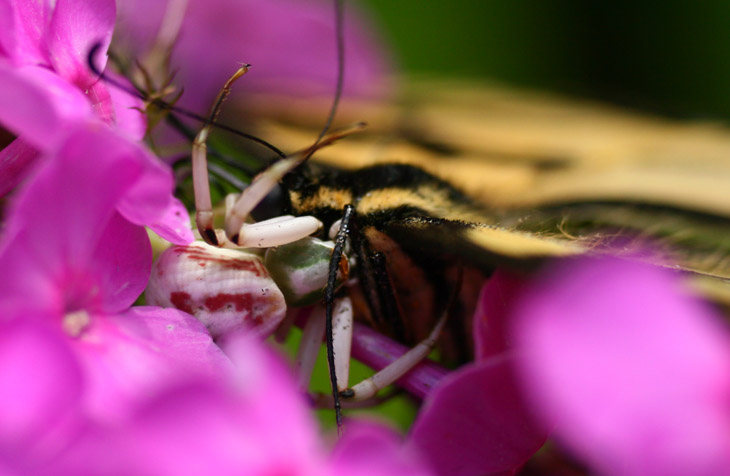 Swallowtails, or indeed most butterflies, don’t hold still on flowers, and don’t sit with their wings extended out flat, so the behavior was the immediate clue to begin looking for something else. And even with this, it took a specific angle to see the spider that I was 99% certain was there.
Swallowtails, or indeed most butterflies, don’t hold still on flowers, and don’t sit with their wings extended out flat, so the behavior was the immediate clue to begin looking for something else. And even with this, it took a specific angle to see the spider that I was 99% certain was there.
Pleased with this, I started to mention another species that I had intentions of capturing as I stepped away. The word weren’t even out of my mouth as I spied the next one, not three meters from the crab spider and swallowtail:
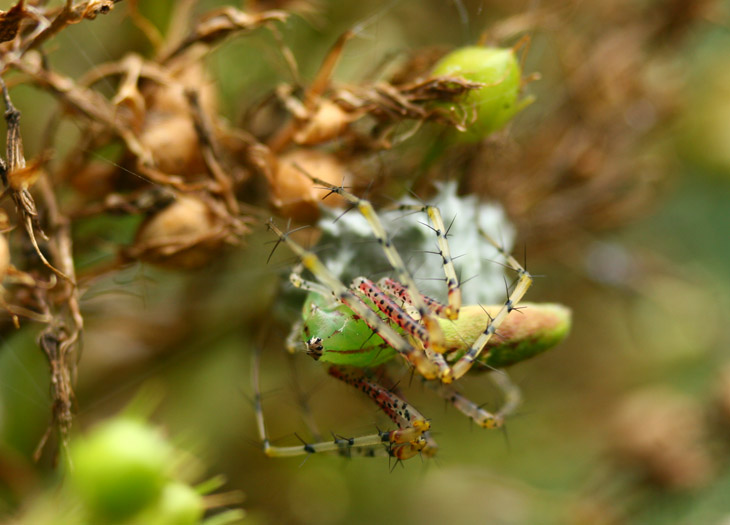
This is a green lynx spider (Peucetia viridans) perched atop a newly-created egg sac – this can be determined by the sac’s pale green color, which will fade to brown within a few days. The knowledge of this color change, instead of being determined through observation, was obtained from Jim Kramer after his observations – networking is also a great way to learn traits and behavior.
By the way, more views of green lynx spiders can be seen here, such as what they look like before creating an egg sac, and the aftermath can be found here.
The luck we were having over finding subjects was noticeable, but deserves a bit of perspective. First off, I had the goals mostly because I already knew such species could be found in these areas and conditions, so actually finding them isn’t surprising in any way, even when it’s quite possible not to see anything. More, it was the spoken announcements followed closely by finding the very subjects discussed that seemed remarkable, and that’s just coincidental timing. I’m not superstitious, but I went ahead and played the game anyway, asking my student what subject we should request next; his wise choice was one of the mimic moths such as the clearwing moth seen here (and I’m pretty sure that’s the same species of flower, and definitely the same locale, as the crab spider lair above.) Since I’d just seen one on the last visit not two weeks previously, I felt our chances were good and boldly proclaimed our intentions of finding one. Alas, the luck did not hold and I could claim no special powers of prognostication or arthropod telekinesis; I did eventually spot one in passing, but so briefly that no photographs were possible. That’s what you get for being cocky.
[Did you like that? After drawing an unwarranted conclusion that something more than coincidence was at work, this was dismissed by implying that something directed or intended was still at work, only this time to thwart the magic – while being no less magic. We really are a weird species capable of deriving a supposed pattern from just about any circumstances.]
Which is not to say that we ran out of subjects to photograph – the swallowtail shots from the previous post were also from the same outing, and we got dozens more between us. So I’ll close with yet another, a slightly-targeted find. This little grey treefrog (Hyla chrysoscelis or Hyla versicolor, not sure which since the only way to distinguish is by their call,) was found in the same location that I had seen one during my previous trip – except it’s clearly not the same one, and the habitat is only vaguely conducive to their presence, meaning I can be in such areas time and time again and not see any such frogs. So I consider finding it more a matter of serendipity, even though I was looking closely for just this kind of subject.

Anyway, I hope the advice is useful, but just bear in mind that it may take time to develop the attitudes and behaviors to the point where you use them consistently, without even thinking about it. Good luck!




















































